As worldwide temperatures rise, extreme local weather events have gotten further intense and additional frequent all everywhere in the world.
Over the earlier 20 years, the cutting-edge topic of utmost local weather attribution has sought to establish the place that human-caused warming has carried out in these events.
There are literally plenty of of attribution analysis, assessing extremes ranging from heatwaves in China and droughts in Madagascar by to wildfires in Brazil and extreme rainfall in South Africa.
Carbon Transient has mapped every attribution study printed so far, revealing that three-quarters of the extremes analysed have been made further intense or most likely ensuing from native climate change.
Along with this explosion of current analysis, the a number of forms of attribution analysis have superior and expanded over the earlier 20 years.
As an illustration, the World Local weather Attribution service was established in 2015 to supply rapid-response analysis, streamlining the strategy of estimating the human contribution to extreme events in a matter of days.
Within the meantime, a rising group of researchers are rising the “storyline technique” to attribution that focuses further on the dynamics of the actual events being studied.
Totally different researchers are using local weather forecasts to attribute events that have not even occurred however. And plenty of analysis are literally combining these methods to get the easiest of all worlds of their findings.
On this detailed Q&A, Carbon Transient explores how the sector of attribution science has superior over time and explains the essential factor methods used instantly.
What are the origins of ‘extreme local weather attribution’?
The Intergovernmental Panel on Native climate Change (IPCC) made its first level out of attribution in its first analysis report (pdf), printed in 1990. In a bit known as “Attribution and the fingerprint approach”, the report refers to attribution as “linking set off and affect”.
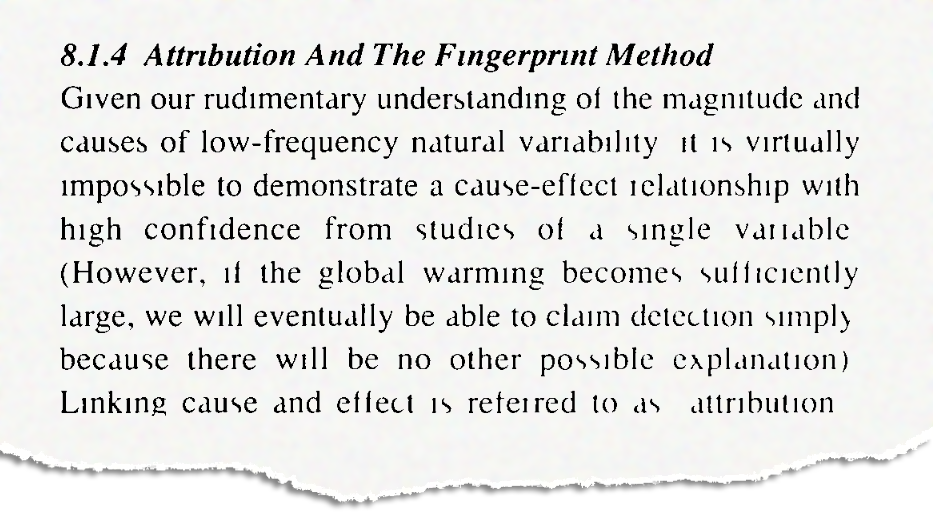
In these early days of attribution science, consultants used statistical methods to hunt for the “fingerprint” of human-caused native climate change in worldwide temperature info.
However, the 1990 report says that “it isn’t attainable presently to attribute all and even a giant part of the seen worldwide suggest warming to the improved greenhouse affect on the premise of the observational info presently on the market”.
As a result of the observational report lengthened and scientists refined their methods, consultants turned further assured about attributing worldwide temperature rise to human-caused native climate change. By the purpose its third analysis report was printed in 2001, the IPCC could state that “detection and attribution analysis continuously uncover proof for an anthropogenic signal throughout the native climate report of the ultimate 35 to 50 years”.
Merely two years later, Prof Myles Allen – professor of geosystem science on the Faculty of Oxford – wrote a Nature commentary from his residence in Oxford that will open the door for attributing extreme local weather events to native climate change. The article begins:
“As I write this textual content in January 2003, the floodwaters of the River Thames are about 30 centimetres from my kitchen door and slowly rising. On the radio, a advisor of the UK Met Office has merely outlined that although that’s the kind of phenomenon that worldwide warming could make further frequent, it is inconceivable to attribute this specific event (floods in southern England) to earlier emissions of greenhouse gases. What’s a lot much less clear is whether or not or not the attribution of explicit local weather events to exterior drivers of native climate change will always be inconceivable in principle, or whether or not or not it is merely inconceivable at present, given our current state of understanding of the native climate system.”
Merely months after Oxford’s floodwaters began to recede, a now-infamous heatwave swept all through Europe. The summer season of 2003 was the preferred ever recorded for central and western Europe, with widespread temperatures in plenty of worldwide places reaching 5C bigger than regular.
The stunning heat resulted in an estimated 20,000 “further” deaths, making the heatwave one amongst Europe’s deadliest on report.
In 2004, Allen and two totally different UK-based native climate scientists produced the first formal attribution study, printed in Nature, which estimated the impression of human-caused native climate change on the heatwave.
To conduct the study, the authors first chosen the temperature “threshold” to stipulate their heatwave. They chose 1.6C above the 1961-90 widespread, because of the European summer season of 2003 was the first on report back to exceed this widespread temperature.
They then used a worldwide native climate model to simulate two worlds – one mirroring the world as a result of it was in 2003 and the alternative a fictional world by which the business revolution under no circumstances occurred. Throughout the second case, the native climate is influenced solely by pure modifications, equal to photograph voltaic energy and volcanic train, and there is no human-caused warming.
The authors ran their fashions a whole bunch of situations in each scenario from 1989 to 2003. As a result of the native climate is inherently chaotic, each model “run” – explicit particular person simulations of how the native climate progresses over a couple of years – produces a barely fully totally different improvement of temperatures. Which implies some runs simulated a heatwave within the summertime of 2003, whereas others did not.
The authors counted what variety of situations the 1.6C threshold temperature was crossed within the summertime of 2003 in each model run. They then in distinction the chance of crossing the brink temperature on the earth with – and a world with out – native climate change.
They concluded that “it’s vitally most likely that human have an effect on has in any case doubled the hazard of a heatwave exceeding this threshold magnitude”.
A Nature commentary linked to the study known as the paper a “breakthrough”, stating that it was the “first worthwhile attempt to detect man-made have an effect on on a specific extreme climatic event”.
Throughout the decade following the heatwave study, further teams from everywhere in the world began to utilize the equivalent methods – usually referred to as “probabilistic”, “risk-based” or “unconditional” attribution.
Prof Peter Stott is a science fellow in native climate attribution on the UK Met Office and an creator on the study. Stott tells Carbon Transient that the important methods used on this primary attribution study are “nonetheless used to this present day”, nonetheless that scientists now use further “up-to-date” native climate fashions than the one utilized in his seminal study.
Once more to excessive
What’s ‘probabilistic’ attribution?
As a result of the 2004 Nature study demonstrated, probabilistic attribution entails scientists working native climate fashions a whole bunch of situations in eventualities with and with out human-caused native climate change, then evaluating the two.
This allows them to say how extra possible, intense or long-lasting an event was ensuing from native climate change.
Many analysis since have added a third scenario, by which the planet is hotter than present-day temperatures, to judge how native climate change would possibly impression extreme local weather events eventually.
The decide beneath reveals three distributions of quite a lot of fully totally different simulated extreme events. The x-axis (horizontal) represents the depth of the native climate variable – on this event temperature – with lower temperatures on the left and higher temperatures on the most effective. The y-axis (vertical) reveals the chance of this variable hitting positive values.
Each curve reveals how the native climate variable behaves in a particular scenario, or “world”. The red-shaded curve reveals a pre-industrial world that was not warmed by human have an effect on, the yellow-shaded curve signifies instantly’s native climate, whereas the dashed line reveals a future, hotter world. The curves shift from left to correct as a result of the native climate warms.
The peak of each curve reveals the virtually actually temperatures, whereas chances are high lowest on the far left and far correct of each curve, the place temperatures are most extreme. The hatched areas current the temperatures that cross a predefined “threshold” temperature. (Throughout the attribution study on the 2003 European heatwave, this threshold was outlined as 1.6C above the 1961-90 widespread.)
The three curves current how the brink is further extra more likely to be crossed as a result of the world warms.
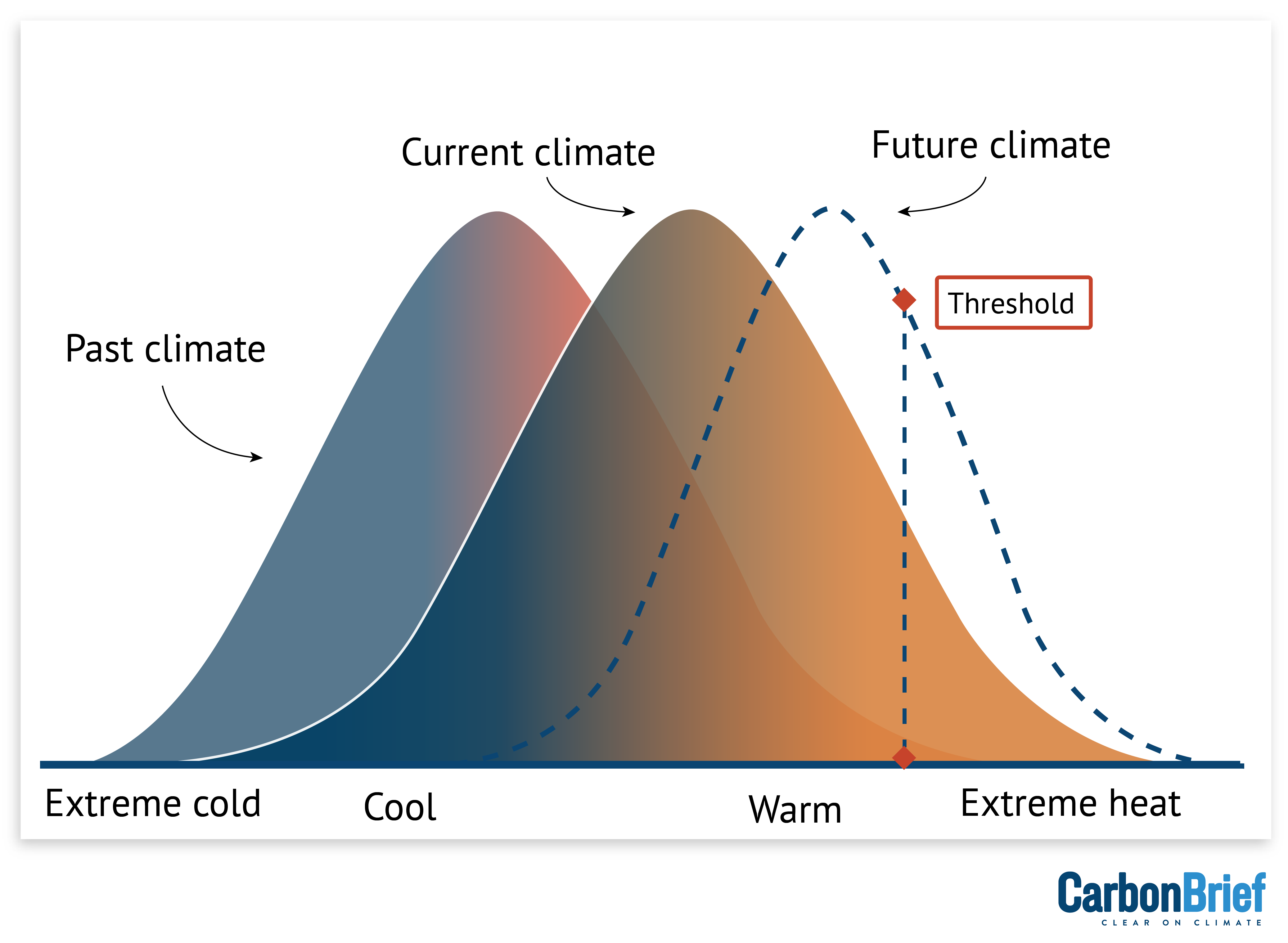
Once more to excessive
Which local weather extremes can scientists hyperlink to native climate change?
In 2011, the American Meteorological Society decided to include a “explicit complement” about attribution evaluation in its annual report.
The complement supplied six fully totally different attribution analysis. It generated very important media curiosity and the “Explaining Extreme Events” report has been printed by Bulletin of the American Meteorological Society nearly yearly since.
As a result of the evaluation topic has grown, so too has the differ of varied extremes which have been studied.
Heatwaves are normally considered the most effective extreme events to attribute, because of they’re primarily pushed by thermodynamic influences. In distinction, storms and droughts are further strongly affected by sophisticated atmospheric dynamics, so might be trickier to simulate in a model.
The graphic beneath reveals the relative confidence of attributing a number of forms of extreme events.
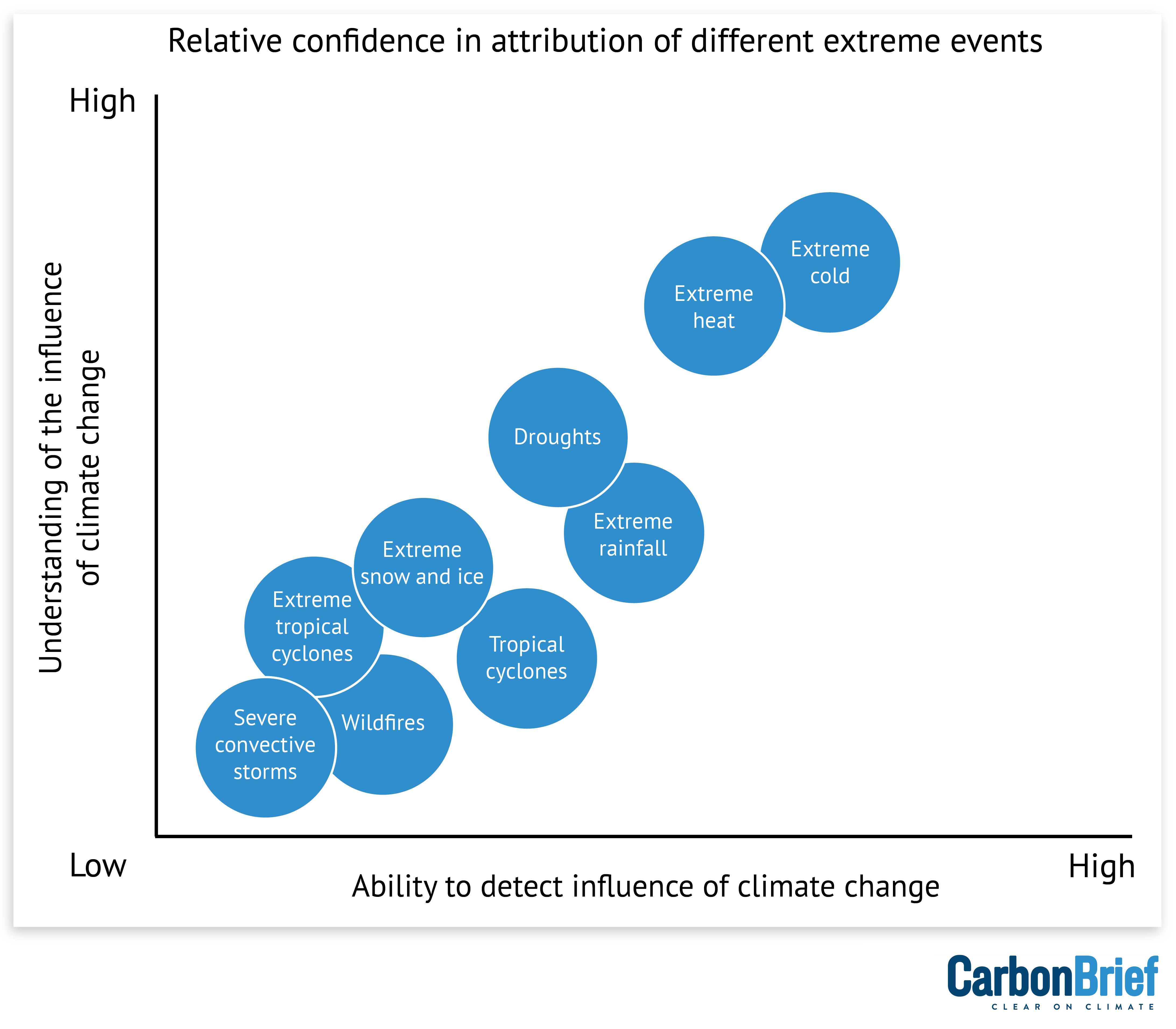
Attribution analysis on extreme heat sometimes assess how rather a lot hotter, long-lasting or most likely an event was ensuing from native climate change. As an illustration, one study finds that the summer season heatwave that hit France in 2019 was made 1.5-3C hotter ensuing from native climate change and about 100 situations further most likely.
Heatwaves are the most-studied extreme event in attribution literature, nonetheless have gotten “a lot much less and fewer attention-grabbing for researchers”, in line with a Bloomberg article from 2020.
Assessing extreme rainfall is further refined – partly because of the Earth’s chaotic local weather system signifies that the size and path of a storm or heavy rainfall event has a giant ingredient of chance, which could make it tough to determine the place native climate change matches in.
Nonetheless, many teams have printed analysis attributing extreme rainfall events and storms. As an illustration, one study (pdf) found that native climate change doubled the chance of the extraordinary rainfall that fell in northern China in September 2021.
Scientists moreover study further sophisticated events, equal to drought, wildfires and floods, which can be impacted by parts along with land use and disaster preparedness.
As an illustration, there are many other ways to stipulate a drought. Some are linked merely to rainfall, whereas others ponder parts along with soil moisture, groundwater and river motion. Some attribution analysis investigating the impression of native climate change on drought focus solely on rainfall deficit, whereas others (pdf) study temperature or vapour pressure deficit – the excellence between the amount of moisture throughout the air and the way in which rather a lot moisture the air can preserve when it is saturated.
A scientist’s decision about which form of drought to assessment sometimes depends on the on the market info and the form of impacts attributable to the drought. In numerous situations, the choice would possibly come all the way in which all the way down to what prompted an important impression on people.
As an illustration, in late 2022, South America was affected by a excessive drought that prompted widespread crop failure. An attribution study on the event, subsequently, centered on “agricultural” drought, which captures the response of rainfall on soil moisture conditions and is basically essentially the most associated for crop effectively being.
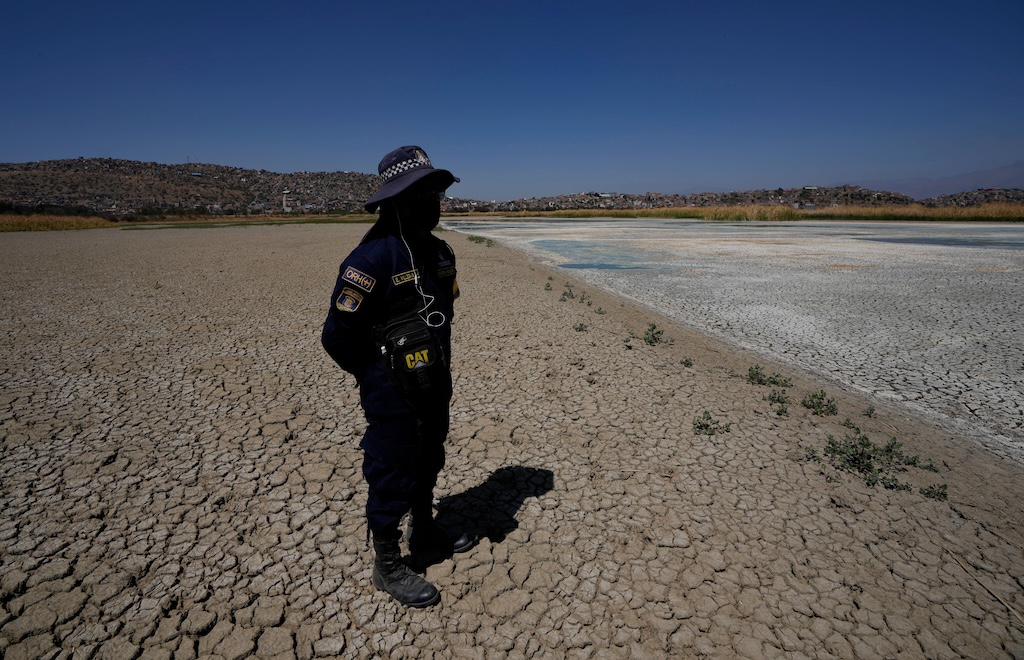
Within the meantime, a study on drought in Madagascar over 2019-21 chosen to cope with rainfall deficit. The study says “this was because of present evaluation found rainfall deficits have been the primary driver of drought in areas of East Africa with very associated climatic properties to south-west Madagascar”.
Wildfires are affected by conditions along with temperature, rainfall, wind tempo and land use. Whereas some wildfire attribution analysis cope with vapour pressure deficit, others quantify the fireside local weather index, which appears to be on the outcomes of gasoline moisture and wind on fireside behaviour and unfold”.
Tropical cyclones are moreover sophisticated. There could also be proof that native climate change can enhance the peak “rain expenses” and wind speeds of tropical cyclones, and that storm tracks are shifting poleward. There are numerous options of a cyclone which may be analysed, equal to rainfall depth, storm surge high and storm measurement.
Once more to excessive
Why do scientists perform ‘speedy’ attribution analysis?
As extreme local weather attribution turned further mainstream, researchers began to supply analysis further shortly. However, challenges in talking the findings of attribution analysis in a effectively timed means shortly turned evident.
After conducting a study, writing it up and submitting it to a journal, it might probably nonetheless take months or years for evaluation to be printed. Which implies, by the purpose an attribution study is printed, the acute event has most likely prolonged handed.
The World Local weather Attribution (WWA) initiative was based mostly in 2015 to cope with this drawback. The group makes use of an extraordinary, peer-reviewed methodology for his or her analysis, nonetheless would not publish the results in formal journals – as an alternative publishing them immediately on their site.
(After publishing these “speedy attribution” analysis on their site, the group sometimes write full papers for publication in formal journals, which can be then peer reviewed.)
Which implies comparatively than taking months or years to publish their evaluation, the group might make their findings public merely days or maybe weeks after an extreme local weather event occurs.
In 2021, the founders of the initiative – along with Carbon Transient contributing editor Dr Friederike Otto, who’s a senior lecturer in native climate science at Imperial Faculty London’s Grantham Institute – wrote a Carbon Transient customer publish explaining why they based mostly WWA:
“By reacting in a matter of days or maybe weeks, we now have been able to inform key audiences with a robust scientific consequence swiftly after an extreme event has occurred – when the curiosity is highest and outcomes most associated.”
The customer publish explains that to conduct an attribution study, the WWA group first makes use of seen info to judge how unusual the event is throughout the current native climate – and the way in which rather a lot this has modified over the seen report. That’s communicated using a “return interval” – the anticipated frequency an event of this magnitude might probably be anticipated beneath a given native climate.
As an illustration, the WWA analysed the UK’s record-shattering heatwave of 2022, when the nation recorded temperatures above 40C for the first time. They found that the utmost temperature seen throughout the UK on 19 July 2022 has a 1,000-year return interval in instantly’s native climate – which signifies that even in instantly’s native climate, 40C heat would solely be anticipated, on widespread, as quickly as in a millennium.
The authors then use native climate fashions to carry out the “probabilistic” attribution study, to learn the way much more intense, most likely or long-lasting the event was due to native climate change. They conclude by conducting “vulnerability and publicity” analysis, which usually highlights totally different socioeconomic points.
Sometimes, the authors conclude that native climate change did not have an effect on the event. As an illustration, a 2021 speedy attribution study by WWA found that poverty, poor infrastructure and dependence on rain-fed agriculture have been the precept drivers of the persevering with meals catastrophe in Madagascar, whereas native climate change carried out “no more than a small half”.
Totally different groups are moreover conducting speedy attribution analysis. As an illustration, a bunch of scientists – along with some WWA collaborators – currently launched a “speedy experimental framework” evaluation problem known as ClimaMeter. The software program offers preliminary attribution outcomes merely hours after an extreme local weather event takes place.
ClimaMeter focuses on the atmospheric circulation patterns that set off an extreme event – as an example, a low-pressure system in a specific space. As quickly as an event is printed, the scientists search the historic report to hunt out events with associated circulation patterns to calculate how the depth of the events has modified over time.
Once more to excessive
Can the impacts of utmost local weather be linked to native climate change?
A division of attribution science known as “impression attribution” – which objectives to quantify the social, monetary and/or ecological impacts of native climate change on extreme local weather events – could be gaining repute. There are 4 important sorts of impression attribution, as confirmed throughout the graphic beneath.
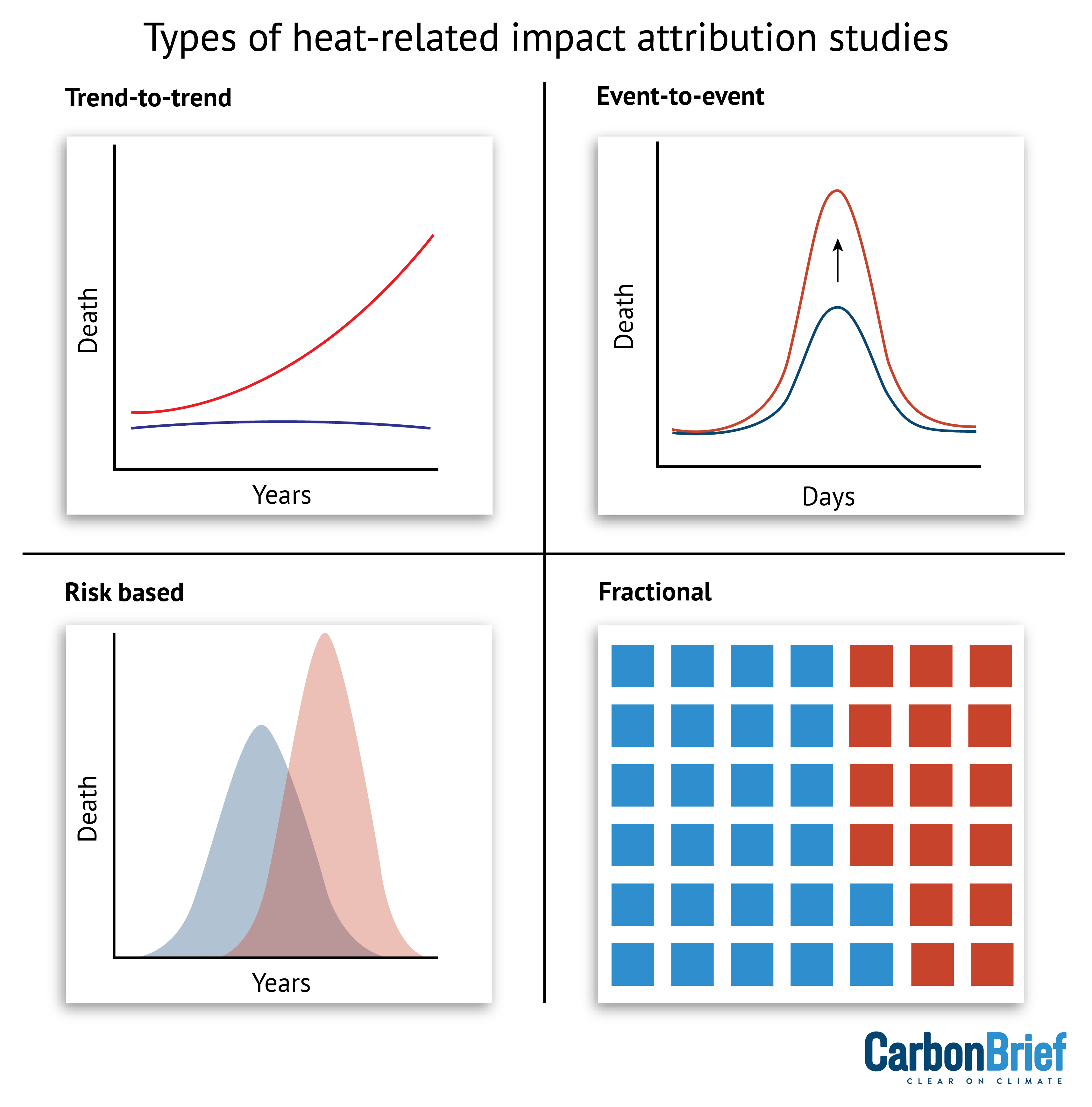
1) Improvement-to-trend impression attribution
The first approach, known as “trend-to-trend” impression attribution, assesses long-term traits in every the native climate system and in “effectively being outcomes”. This technique was utilized in a 2021 study on heat-related mortality everywhere in the world, which acquired in depth media consideration.
The authors used info from 732 locations in 43 worldwide places to determine relationships between temperature and mortality in quite a few locations, usually referred to as “exposure-response options”. This allowed them to estimate what number of people would die in a given location, if temperatures attain a positive stage.
The authors used these relationships to calculate heat-related mortality over 1991-2018 for each location beneath two eventualities – one with and one with out human-caused native climate change. The study concluded that 37% of “warm-season heat-related deaths” might be attributed to human-caused native climate change.
2) Event-to-event attribution
The second kind of study is known as “event-to-event” attribution. In a single study using this system, the authors used info on seen mortality expenses to learn the way many people died in Switzerland by means of the unusually warmth summer season of 2022.
They calculated how rather a lot native climate change contributed to warming all through that summer season. They then then ran a model to calculate the “hypothetical heat-related burden” that will have been seen by means of the summer season with out the warming have an effect on of native climate change.
Using this system, they estimate that 60% of the 623 heat-related deaths “could have been prevented in absence of human-induced native climate change”.
3) Menace-based event attribution
“Menace-based” event impression attribution – which is demonstrated in a more moderen study on the 2003 European heatwave – is the third kind of impression attribution. This system combines probabilistic event attribution with ensuing effectively being outcomes.
When the paper was printed, its lead creator, Prof Dann Mitchell – a professor of native climate science on the Faculty of Bristol – outlined the technique to Carbon Transient:
“We have got a statistical relationship between the number of additional deaths per diploma of warming. That’s explicit to a positive metropolis and modifications hundreds between cities. We use native climate simulations to calculate the heat in 2003, and in 2003 with out human influences. Then we study the simulations, along with the observations.”
They uncover, as an example, that within the summertime of 2003, anthropogenic native climate change elevated the hazard of heat-related mortality in London by spherical 20%. Which implies out of the estimated 315 deaths in London by means of the heatwave, 64 have been ensuing from native climate change.
4) Fractional attribution
Throughout the remaining approach, usually referred to as “fractional” attribution, the authors combine the outcomes of two neutral numbers – an estimation of the general damages attributable to an extreme local weather event, and a calculation of the proportion of the hazard from an extreme local weather event for which anthropogenic native climate change is accountable, usually referred to as the “fraction of attributable menace” (FAR).
The authors of 1 study used this system to estimate the monetary damages linked to Hurricane Harvey.
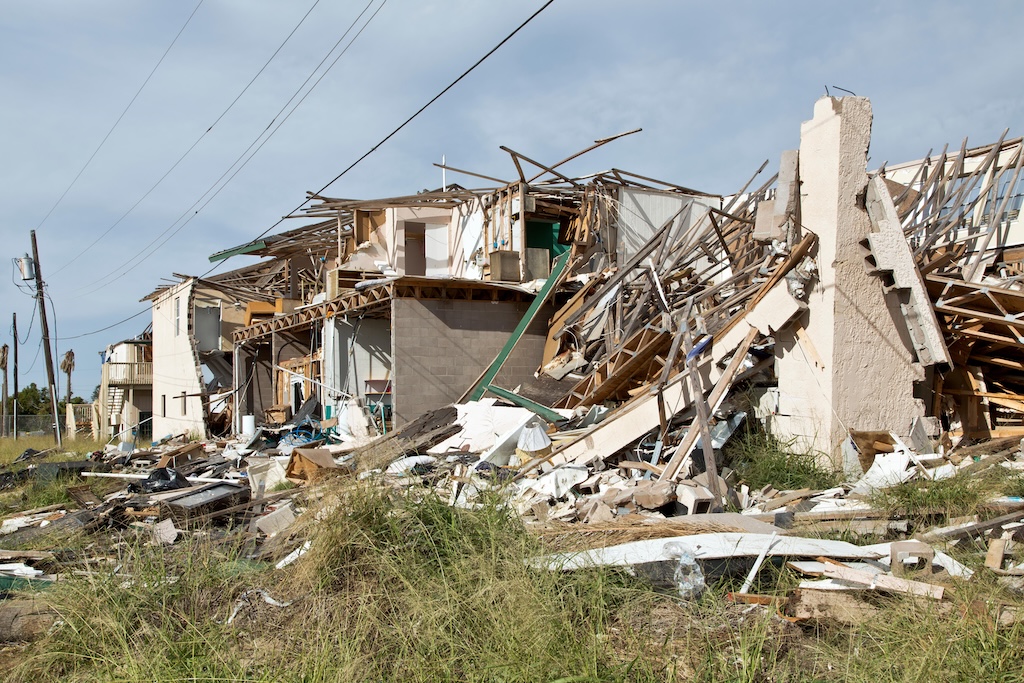
The authors calculate that “fraction of attributable menace” for the rainfall from Harvey was spherical three-quarters – which signifies that native climate change was accountable for three-quarters of the extraordinary rainfall.
Individually, the authors uncover that in line with best estimates, the hurricane prompted damages of spherical US$90bn. From this, the authors conclude that US$67bn of the damages attributable to the Hurricane’s intense rainfall might be attributed to native climate change.
A study on the 2010 Russian heatwave moreover used this system. The authors found that the heatwave was accountable for better than 55,000 deaths (pdf), and positioned an 80% chance that the acute heat would not have occurred with out native climate warming. The study concludes that virtually 45,000 of the deaths have been attributable to human-caused native climate change.
However, the fractional attribution approach has acquired criticism. One paper argues that the technique “inflates the impacts associated to anthropogenic native climate change”, because of it “incorrectly assumes” that the event has no impression till it exceeds the brink outlined by the researchers.
Various the authors of the Hurricane Harvey paper later wrote a paper advising warning in deciphering the outcomes of FAR analysis. They’re saying:
“The fraction of attributable menace (FAR) approach, useful in extreme local weather attribution evaluation, has a extremely explicit interpretation concerning a class of events, and there could also be potential to misinterpret outcomes from local weather event analyses as being related to explicit events and their impression outcomes…FAR is simply not normally acceptable when estimating the magnitude of the anthropogenic signal behind a specific impression.”
Growing scope
Have an effect on attribution is fixed to develop in scope. As an illustration, analysis are literally being carried out to judge the impression of native climate change on sickness transmission.
In 2020, scientists quantified the have an effect on of native climate change on explicit episodes of utmost ice loss from glaciers for the first time. They found that human-caused native climate change made the acute “mass loss” seen in glaciers throughout the Southern Alps, New Zealand, in 2018 in any case 10 situations further most likely.
Scientists have moreover linked native climate change to ecosystem shifts. One study specializing in temperature finds that the “terribly early cherry tree flowering” seen in Kyoto in 2021 was made 15 situations further most likely ensuing from native climate change.

Others go even extra, linking local weather extremes to societal impacts. As an illustration, a 2021 study printed in Scientific Experiences says:
“By combining an extreme event attribution analysis with a probabilistic model of meals manufacturing and prices, we uncover that native climate change elevated the chance of the 2007 co-occurring drought in South Africa and Lesotho, aggravating the meals catastrophe in Lesotho.”
Within the meantime, Imperial Faculty London’s Grantham Institute is engaged on an initiative to publish speedy impression attribution analysis about extreme local weather events everywhere in the world. Identical to WWA analysis, these speedy analysis will not be peer reviewed individually, nonetheless shall be based mostly totally on a peer-reviewed methodology.
Dr Emily Theokritoff – a evaluation affiliate at Grantham, who’s engaged on the initiative, tells Carbon Transient that can most likely be launched “throughout the near future”. She gives:
“The purpose is to recharge the sector, start a dialog about native climate losses and damages, and help people understand how native climate change is making life further dangerous and dearer.”
Once more to excessive
How do scientists attribute ‘unprecedented’ events?
An attribution approach usually referred to as the “storyline technique” or “conditional attribution” has develop into increasingly more well-liked over the earlier decade – no matter initially inflicting controversy throughout the attribution group.
On this technique, researchers first select an extreme local weather event, equal to a specific heatwave, storm or drought. They then set up the bodily elements, equal to sea ground temperature, soil moisture and atmospheric dynamics, that led to the event unfolding in the way in which wherein it did. This assortment of events is named a “storyline”.
The authors then use fashions to simulate this “storyline” in two fully totally different worlds – one on the earth as everyone knows it and one in a counterfactual world – as an example, with a particular sea ground temperature or CO2 stage. By evaluating the model runs, the researchers can draw conclusions about how rather a lot native climate change influenced that event.
The storyline technique is helpful for explaining the have an effect on of native climate change on the bodily processes that contributed to the event. It could even be used to find intimately how this event would have carried out out in a warmer (future) or cooler (pre-industrial) native climate.
One study describes the storyline technique as an “autopsy”, explaining that it “gives an account of the causes of the acute event”.
Prof Ted Shepherd, a researcher on the Faculty of Finding out, was certainly one of many earliest advocates of the storyline attribution technique. On the EGU primary assembly in Vienna in April 2024, Shepherd equipped the opening talk about in a session on storyline attribution.
He instructed the packed conference room that the storyline technique was born out of the need for a “forensic” technique to attribution, comparatively than a “positive/no” technique. He emphasised that extreme local weather events have “quite a lot of causes” and that the storyline technique permits researchers to dissect each of these elements.
Dr Linda van Garderen is a postdoctoral researcher at Utrecht Faculty and has carried out quite a lot of analysis using the storyline approach. She tells Carbon Transient that, whereas standard attribution normally investigates likelihood, the storyline technique analyses depth.
As an illustration, she led an attribution study using the storyline approach which concluded that the 2003 European and 2010 Russian heatwaves would have been 2.5-4C cooler in a world with out native climate change.
She gives that it might probably make communication easier, telling Carbon Transient that “prospects might be tough to interpret in smart every single day life, whereas the depth framing of storyline analysis is further intuitive and will make attribution analysis easier to know”.
Dr Nicholas Leach is a researcher on the Faculty of Oxford who has carried out quite a lot of analysis using the storyline technique. He tells Carbon Transient that probabilistic attribution sometimes produces “false negatives”, wrongly concluding that native climate change did not have an effect on an event.
It’s as a result of native climate fashions have “biases and uncertainties” which could lead to “noise” – notably in relation to dynamical choices equal to atmospheric circulation patterns. Probabilistic attribution methods sometimes end up shedding the signal of native climate change on this noise, he explains.
The storyline technique is able to avoid these factors further merely, he says. He explains that by specializing within the dynamics of 1 explicit event, comparatively than a “broad class of events”, storyline analysis can take away a couple of of this noise, making it further straightforward to determine an indication, he says.
Conversely, others have critiqued the storyline approach for producing false positives, which wrongly declare that native climate change influenced an extreme local weather event.
The storyline technique has moreover been praised for its functionality to attribute “unprecedented” events. Throughout the EGU session on the storyline approach, many exhibits explored how the storyline approach might probably be used to attribute “statistically inconceivable” extremes.
Leach explains that when a completely unprecedented extreme event occurs, statistical fashions sometimes level out that the event “shouldn’t have occurred”. When working a probabilistic analysis using these fashions, Leach explains: “You end up with the present likelihood being zero and former likelihood being zero, so it’s possible you’ll’t say hundreds.”
He components to the Pacific north-west heatwave of 2021 for instance of this. This event was most likely essentially the most extreme regional heat events ever recorded globally, breaking some native extreme temperature info by better than 6C.

WWA carried out a speedy attribution study on the heatwave, using its probabilistic attribution approach. The heatwave was “so extreme” that the seen temperatures “lie far exterior the differ” of historic observations, the researchers talked about.
Their analysis signifies that the heatwave was spherical a one-in-1,000-year event in instantly’s native climate and was made in any case 150-times further most likely as a consequence of native climate change.
Leach and his colleagues used the storyline approach to attribute the equivalent heatwave. The methods of this study shall be talked about further throughout the following half.
Leach explains that using the storyline technique, he was able to ponder the physics of the event, along with an atmospheric river that coincided with the “heat dome” that was a key attribute of the event. This helped him to suggest the event properly in his fashions. The study concluded that the heatwave was 1.3C hotter and eight situations further most likely due to native climate change.
Many consultants inform Carbon Transient there was initially stress throughout the attribution group between probabilistic and storyline advocates when the latter was first launched. However, as a result of the storyline approach has develop into further mainstream, criticism has abated and loads of scientists are literally publishing evaluation using every strategies.
Van Garderen tells Carbon Transient that storyline attribution is “together with to the attribution toolbox”, comparatively than attempting to interchange current methods. She emphasises that probability-based and storyline attribution reply fully totally different questions, and that every are important.
Once more to excessive
How can local weather forecasts be utilized in attribution analysis?
Forecast attribution is the newest important addition to the attribution toolbox. This system makes use of local weather forecasts as an alternative of native climate fashions to carry out attribution analysis. Many consultants describe this system as sitting part-way between probabilistic and storyline attribution.
One benefit of using forecasts, comparatively than native climate fashions, is that their bigger resolution lets them simulate extreme local weather events in extra factor. By using forecasts, scientists can also attribute events that have not however occurred.
The first use of “advance forecasted” attribution analysis (pdf) quantified the impression of native climate change on the size, rainfall and depth of Hurricane Florence sooner than it made landfall in North Carolina in September 2018.
The authors, in essence, carried out the probabilistic attribution approach, using two items of short-term forecasts for the hurricane comparatively than large-scale native climate fashions. The analysis acquired a mixed response. Stott instructed Carbon Transient on the time that it was “pretty a cool thought”, nonetheless was extraordinarily relying on being able to forecast such events reliably.
Dr Kevin Trenberth, distinguished senior scientist on the Nationwide Coronary heart for Atmospheric Evaluation, instructed Carbon Transient in 2019 that the study was “slightly little bit of a disaster”, explaining that the usual of the forecast was questionable for the analysis.
The authors subsequently printed a paper in Science Advances reviewing their study “with the advantage of hindsight”. The authors acknowledged that the outcomes are pretty a way off what they forecasted. However, as well as they claimed to have acknowledged what went flawed with their forecasted analysis.
Points with the “with out native climate change” model runs created an even bigger distinction in opposition to their real-world simulations, which suggests the analysis overestimated the impression of native climate change on the event, they talked about.
Nonetheless, the study did set up a quantifiable impression of native climate change on Hurricane Florence, together with to the proof from analysis by totally different creator groups.
This evaluation group has since printed further forecast-based attribution analysis on hurricanes. One study used hindcasts – forecasts that start from the earlier after which run forward into the present – to analyse the 2020 hurricane season. The group then ran a set of “counterfactual” hindcasts over the equivalent interval, with out the have an effect on of human warming from sea ground temperatures.
They found that hotter waters elevated three-hour rainfall expenses and three-day accrued rainfall for tropical storms by 10% and 5%, respectively, over the 2020 season.
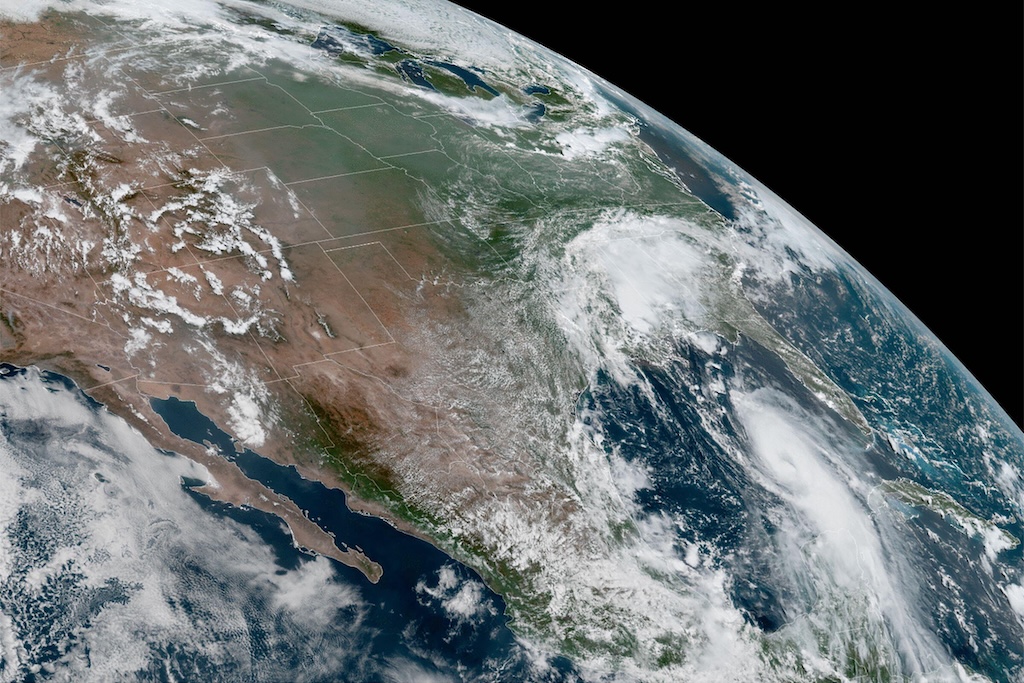
Within the meantime, a 2021 study by a particular group confirmed the way in which it was attainable to utilize standard local weather forecasts for attribution. The researchers, who penned a Carbon Transient customer publish about their work, found that the European heatwave of February 2019 was 42% further most likely for the British Isles and in any case 100% further most likely for France.
To conduct their study, the authors used a local weather forecast model – usually referred to as a “numerical local weather prediction” model (NWP).
They make clear {{that a}} NWP normally runs on the subsequent resolution than a neighborhood climate model, which signifies that it has further, smaller grid cells. This allows it to simulate processes {{that a}} native climate model cannot and makes them “further applicable for studying basically essentially the most extreme events than customary native climate fashions,” the authors argue.
Further currently, Leach and his group carried out a forecast attribution study on the record-breaking Pacific north-west heatwave of 2021, years after the event occurred.
The authors outlined 29 June 2021 as the start of the event, as that’s when the utmost temperature of the heatwave was recorded. They then ran their forecasts using quite a lot of “lead situations” – the number of days sooner than the event begins that the model simulation is initialised.
The shortest lead time on this study was three days, which suggests the scientists began working the model using the local weather conditions recorded on 26 June 2021. The fast lead time meant that they could tailor the model very intently to the local weather conditions presently and simulated the event itself very exactly.
By comparability, the longest lead situations used on this study have been 2-4 months. Which implies the fashions have been initialised in spring and, by the purpose they simulated the June heatwave, their simulation did not intently resemble the events that actually unfolded.
Leach tells Carbon Transient that by lengthening the lead time of the local weather forecast, they will efficiently “shift the dial” from storyline to probabilistic attribution. He explains:
“If you happen to occur to’re using a forecast that’s initialised truly near to your event, you then undoubtedly’re kind of occurring that storyline technique, by saying, ‘I want what my model is stimulating to look truly very similar to the event I’m enthusiastic about’…
“The extra once more [in time] you go, the nearer you get to the additional probabilistic kind of statements which could be further unconditioned.”
This combination of storyline and probabilistic attribution permits the authors to draw conclusions every about how native climate change affected the depth and the chance of the heatwave. The authors estimate that the heatwave was 1.3C further intense and eight situations further most likely due to native climate change.
Further currently, Native climate Central has produced a software program that makes use of temperature forecasts over the US over the approaching days to calculate a “native climate shift index”. This index gives the ratio of how frequent the forecasted temperature is in instantly’s native climate, as compared with how most likely it might be in a world with out native climate change.
The index runs from 5 to minus 5. A outcomes of zero signifies that native climate change has no detectable have an effect on, an index of 5 signifies that native climate change made the temperature in any case 5 situations further most likely and an index of minus 5 signifies that native climate change made the temperature in any case 5 situations a lot much less most likely.
The software program could be utilized for attribution. As an illustration, present analysis by the group used the index to quantify how native climate change has influenced the number of uncomfortably scorching nights. It concluded:
“Attributable to human-caused native climate change, 2.4 billion people expert a imply of in any case two additional weeks per yr the place nighttime temperatures exceeded 25C. Over one billion people expert a imply of in any case two additional weeks per yr of nights above 20C and 18C.”
Once more to excessive
What are the features of attribution science?
One often-touted utility of attribution analysis is to spice up consciousness regarding the place of native climate change in extreme local weather events. However, there are restricted analysis about how environment friendly that’s.
One study presents the outcomes of focus group interviews with UK scientists, who weren’t engaged on native climate change, by which contributors bought attribution statements. The study concludes:
“Extreme event attribution reveals very important promise for native climate change communication as a consequence of its functionality to connect novel, attention-grabbing and event-specific scientific data to private experiences and observations of utmost events.”
However, the study acknowledged quite a lot of challenges, along with “adequately capturing nuances”, “expressing scientific uncertainty with out undermining accessibility of key findings” and difficulties deciphering mathematical options of the outcomes.
In a single different experiment, researchers educated nearly 4,000 adults throughout the US that native climate change had made the July 2023 heatwave throughout the US in any case 5 situations further most likely. The group moreover shared data from Native climate Central’s native climate shift index. In accordance with the study, every approaches “elevated the concept that native climate change made the July 2023 heatwave further most likely and is making heatwaves principally further most likely as properly”.
Within the meantime, as a result of the science of utmost local weather attribution turns into further established, attorneys, governments and civil society are discovering further makes use of for this evolving topic.
As an illustration, attribution is starting to play an important place in courts. In 2017, two attorneys wrote a Carbon Transient customer publish stating “we depend on that attribution science will current important proof that will help courts resolve obligation for native climate change related damage”.
4 years later, the authors of a study on “native climate litigation” wrote a Carbon Transient customer publish explaining how attribution science might be “translated into approved causality”. They wrote:
“Attribution can bridge the opening acknowledged by judges between a primary understanding that human-induced native climate change has many opposed impacts and providing concrete proof of the place of native climate change at a specific location for a specific extreme event that already has led or will lead to damages.”
In 2024, spherical 2,000 Swiss ladies used an attribution study, alongside totally different proof, to win a landmark case throughout the European Courtroom of Human Rights. The women, largely of their 70s, talked about that their age and gender made them notably vulnerable to heatwaves linked to native climate change. The courtroom dominated that Switzerland’s efforts to fulfill its emissions targets had been “woefully inadequate”.

The 2024 European Geosciences Union conference in Vienna devoted a complete session to native climate change and litigation. Prof Wim Thiery – a scientist who was involved in plenty of conference lessons on native climate change and litigation – tells Carbon Transient that attribution science is particularly important for supporting “reparation situations”, by which vulnerable worldwide places or communities search compensation for the damages attributable to native climate change.
He gives Carbon Transient that seeing the “direct and tangible impression” of an attribution study in a courtroom case “motivates native climate scientists in partaking on this group”.
(Totally different sorts of science are moreover important in courtroom situations related to native climate change, he added. As an illustration, “provide attribution” identifies the relative contribution of varied sectors and entities – equal to companies or governments – to native climate change.)
Dr Rupert Stuart-Smith, a evaluation affiliate in native climate science and the laws on the Faculty of Oxford’s Sustainable Regulation Programme, gives:
“We’re seeing a model new evolution whereby communities are increasingly more impact-relevant variables. Think about inundated areas, lake ranges, heatwave mortalities. These are the model new purpose variables of attribution science. It’s a new frontier and we’re seeing that these analysis are immediately usable in courtroom situations.”
He tells Carbon Transient that some situations “have sought to hold high-emitting corporations – equal to fossil gasoline or agricultural companies – accountable for the costs of native climate change impacts”. He continues:
“In situations like these, claimants normally wish to level out that native climate change is inflicting explicit harms affecting them and courts would possibly leverage attribution or native climate projections to adjudicate these claims. Have an effect on attribution is particularly associated on this context.”
Dr Delta Merner is a lead scientist on the science hub for native climate litigation. She tells Carbon Transient that “enhanced provide attribution for companies and worldwide places” shall be “essential” for holding important emitters accountable. She gives:
“That’s an urgent time for the sector of attribution science, which is uniquely capable of providing sturdy, actionable proof to inform decision-making and drive accountability.”
Within the meantime, many worldwide places’s nationwide local weather firms are engaged on “operational attribution” – the widespread manufacturing of speedy attribution assessments.
Stott tells Carbon Transient that the UK Met Office is operationalising attribution analysis. As an illustration, on 2 January 2024, it launched that 2023 was the second-warmest yr on report for the UK, with a imply temperature of 9.97C.
New methods are moreover being developed. As an illustration, groups, such as a result of the “eXtreme events: Artificial Intelligence for Detection and Attribution” (XAIDA) group, are researching the utilization of machine finding out and artificial intelligence for attribution analysis.
One present attribution study makes use of a machine-learning technique to create “dynamically fixed counterfactual variations of historic extreme events beneath fully totally different ranges of world suggest temperature”. The authors estimate that the south-central North American heatwave of 2023 was 1.18-1.42C hotter as a consequence of worldwide warming.
The authors conclude:
“Our outcomes broadly agree with totally different attribution strategies, suggesting that machine finding out could be utilized to hold out speedy, low-cost attribution of utmost events.”
Totally different scientists are using a means known as UNSEEN, which entails working fashions a whole bunch of situations to increase the size of the datasets used to make it easier to derive appropriate prospects from extraordinarily variable extremes.
Once more to excessive
What are the next steps for attribution evaluation?
The consultants that Carbon Transient spoke to for this textual content have extreme hopes for the way in which ahead for attribution science. As an illustration, Stott says:
“Attribution science has good potential to boost the resilience of societies to future native climate change, would possibly assist monitor progress in path of the Paris targets of conserving worldwide warming to properly beneath 2C and will encourage progress in driving down emissions in path of net-zero by the middle of this century.”
However, whatever the progress revamped the earlier 20 years, there are nonetheless challenges to beat. Certainly one of many key boundaries in attribution science is a shortage of high-quality observational info in low-income worldwide places.
To carry out an attribution study, researchers desire a Iong, high-quality dataset of observations from the realm being studied. However, inadequate funding or political instability signifies that many rising worldwide places do not have sufficient local weather station info.
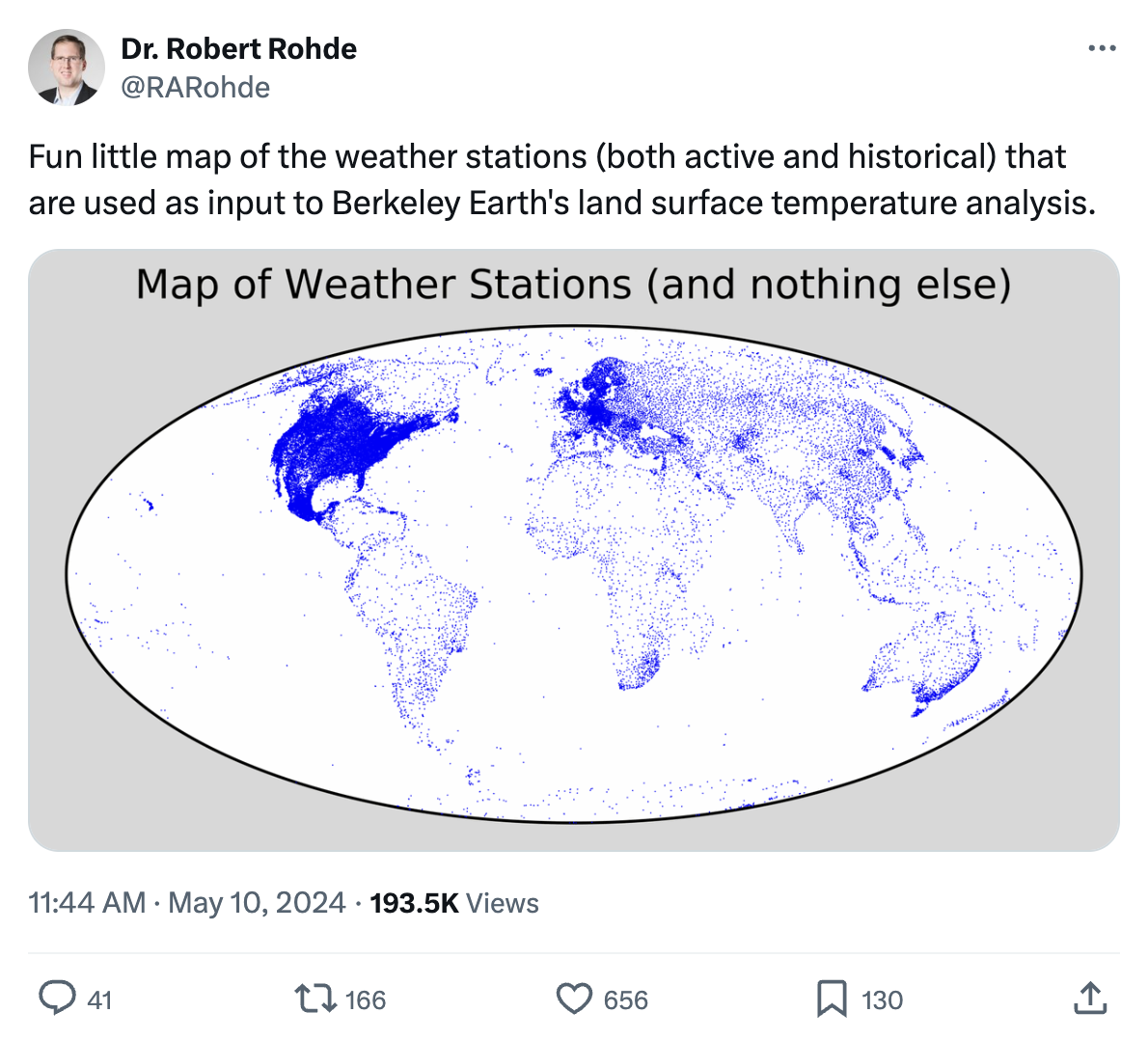
In a 2016 interview with Carbon Transient, Allen talked about that “correct now there could also be clearly a bias in path of our private backyards – north-west Europe, Australia and New Zealand.”
Many WWA analysis in global-south worldwide places level out the issue of discovering sufficient info and sometimes this impacts the outcomes. A WWA study of the 2022 drought in west Africa’s Sahel space was unable to hunt out the signal of native climate change throughout the space’s rainfall pattern – partly, ensuing from widespread uncertainties throughout the observational info.
Otto, who was an creator on the study, outlined on the time:
“It could each be because of the data is form of poor or because of we now have found the flawed indices. Or it might probably be because of there truly isn’t any native climate change signal…We have got no technique of determining which of these three decisions it is.”
Rising greater observational datasets is an ongoing drawback. It is highlighted in plenty of the literature on attribution as an important subsequent step for attribution science – and for native climate science further broadly. Merner tells Carbon Transient that scientists moreover should work on rising “novel approaches for areas with out baseline info”.
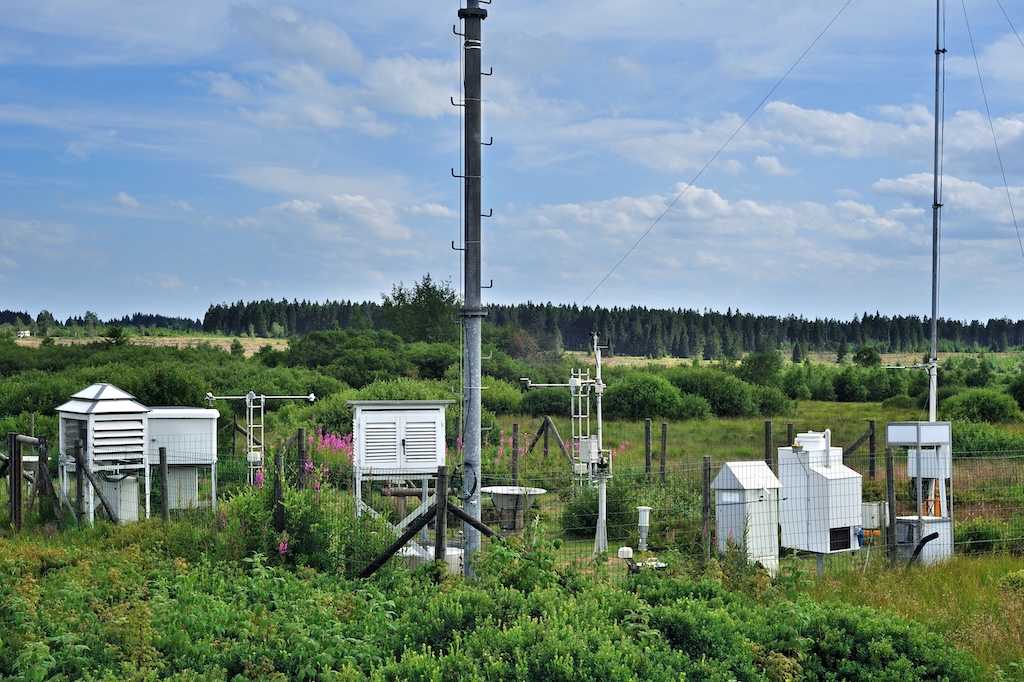
Within the meantime, many scientists depend on the methods utilized in attribution science to proceed evolving. The Detection and Attribution Model Intercomparison Problem is presently accumulating simulations, which is ready to help improved attribution of native climate change throughout the subsequent set of analysis evaluations from the Intergovernmental Panel on Native climate Change.
Mitchell says that, over the next decade, he thinks that “we’ll switch away from the additional generic attribution methods which have served us properly so far, and start rising and making use of additional centered – and far more defensible – methods”.
Significantly, he highlights the need for further explicit methods for impression attribution – as an example, studying the impacts of local weather events on effectively being outcomes, biodiversity modifications or financial losses.
He continues:
“The interplay of varied socioeconomic states and interventions with that of native climate change might make these notably troublesome to assessment – nonetheless we’re getting there with our further superior, albeit computationally pricey methods, equal to using local weather forecast fashions because the inspiration of our attribution statements.”
Stott tells Carbon Transient that incorporating impacts into attribution assessments is a “important house for enchancment” in attribution science. He explains that impression attribution is “very associated to the loss-and-damage agenda and extra developments in attribution science usually tend to embrace the facility to attribute the financial costs of storms”.
Stuart-Smith tells Carbon Transient that, “throughout the coming years, rising numbers of analysis will quantify the monetary burden of native climate change and its outcomes on a broader differ of effectively being impacts, along with from vector and water-borne illnesses”.
Leach moreover tells Carbon Transient that it is “important for attribution to maneuver their focus previous bodily analysis and into quantitative impression analysis to increase their relevance and utility in protection and the media”.
He gives:
“Utilising local weather forecasts for attribution would match neatly with this purpose as these self similar fashions are already broadly utilized by emergency managers and constructed into impression modelling frameworks.”
Equally, Stott tells Carbon Transient that “forecast attribution reveals good potential”. He explains that by “progressing that science” will allow this system to be used to attribute further sorts of extreme local weather with higher confidence.
Leach advocates for higher use of local weather forecast fashions for each kind of attribution. He says:
“Local weather forecast fashions have demonstrated repeatedly over the previous couple of years that they are capable of exactly representing even unprecedented local weather extremes. Using these validated state-of-the-art fashions for attribution could ship an increase in confidence throughout the outcomes.”
Many scientists moreover inform Carbon Transient regarding the significance of operationalising attribution. The local weather firms in plenty of worldwide places already have this in place. Stott tells Carbon Transient that groups in Japan, South Korea, Australia and the US are moreover “at quite a few ranges of rising operational attribution firms”.
Within the meantime, Otto tells Carbon Transient that “essential subsequent step for attribution in my view is to basically mix the analysis of vulnerability and publicity into the attribution analysis”. She gives:
“To make sure that attribution to truly inform adaptation it is essential though to go from attributing hazards, as we do now primarily, to disentangling drivers of disasters.”
Mitchell gives that he thinks attribution statements “are fully essential for [countries to make] nationwide adaptation plans”.
Within the meantime, one different study signifies that extreme event attribution analysis might probably be utilized by engineers, along with native climate projections, to assist native climate adaptation for civil infrastructure.
Leach tells Carbon Transient that attribution might probably be useful throughout the insurance coverage protection sector for associated causes. He gives that many insurance coverage protection sectors use the equivalent forecasts of their catastrophe fashions that native climate scientists use for forecast attribution, which signifies that it must be straightforward in order so as to add attribution analysis into their pipelines.
Once more to excessive
Sharelines from this story
